Photos: Newfound Tyrannosaur Had Nearly 3-Inch-Long Teeth
Fearsome beast
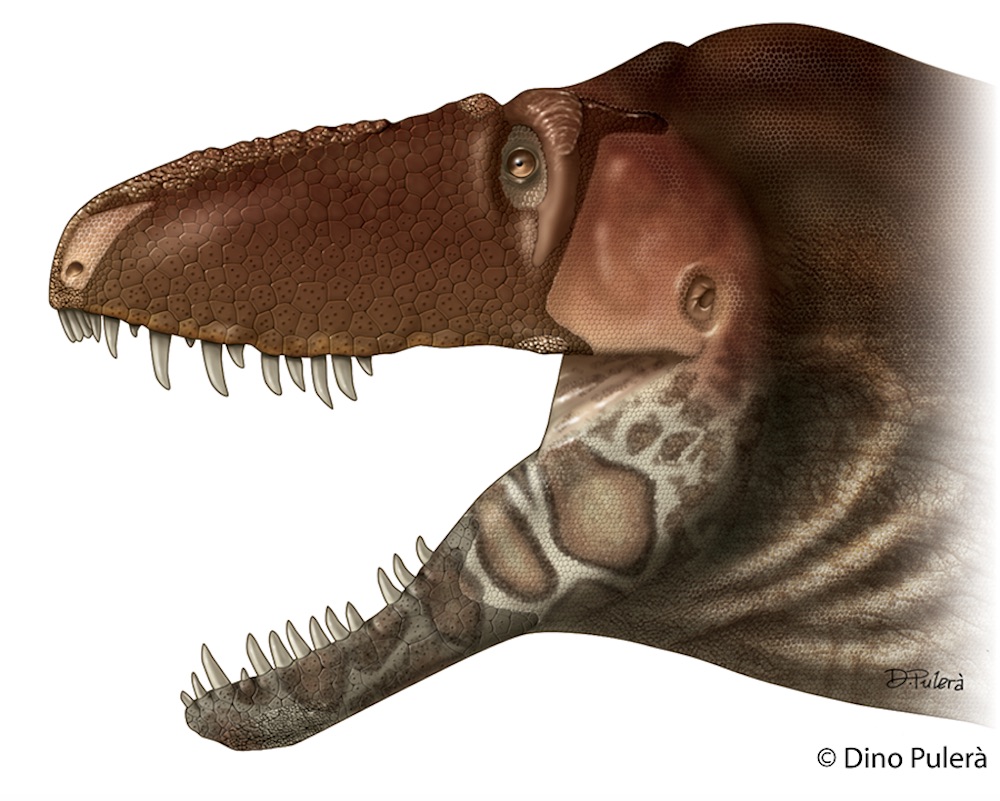
After nearly 30 years since its discovery in Montana, a new species of tyrannosaur is finally making its debut. During its lifetime about 75 million years ago, Daspletosaurus horneri measured almost 30 feet (9 meters) long and stood 7.2 feet (2.2 m) tall at its hipbone. Its longest tooth measured 2.7 inches (70 centimeters) long.The D. horneri finding also helped settle a recent debate about whether tyrannosaurs, such as Tyrannosaurus rex, had lips. A number of well-preserved D. horneri skulls reveal that the dinosaur did not have lips, and instead sported large, flat scales that were likely extremely sensitive to touch. [ Read the Full Story on the New Tyrannosaur Finding ]
The skull
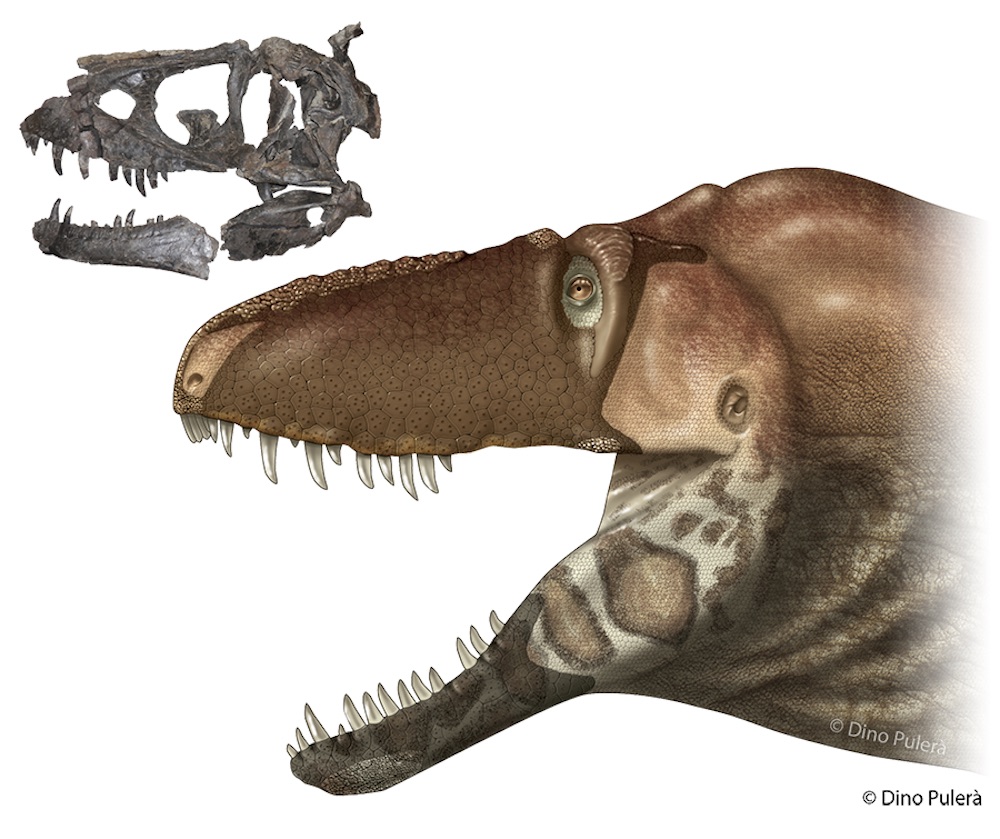
The first D. horneri skull ever found, next to an illustration of what the dinosaur may have looked like in real life. The skull is about 32 inches (89.5 cm) long.
Rawr

D. horneri had large, flat scales and portions of armor-like skin on its snout, jaws and horns. The large horn behind its eye was covered by keratin, the same material found in human fingernails.
The small bumps on its flat scales are called integumentary sensory organs (ISOs), which are also seen in crocodilians. These ISOs provide tactile sensitivity. The skull is 895 millimeters long.
Evolution
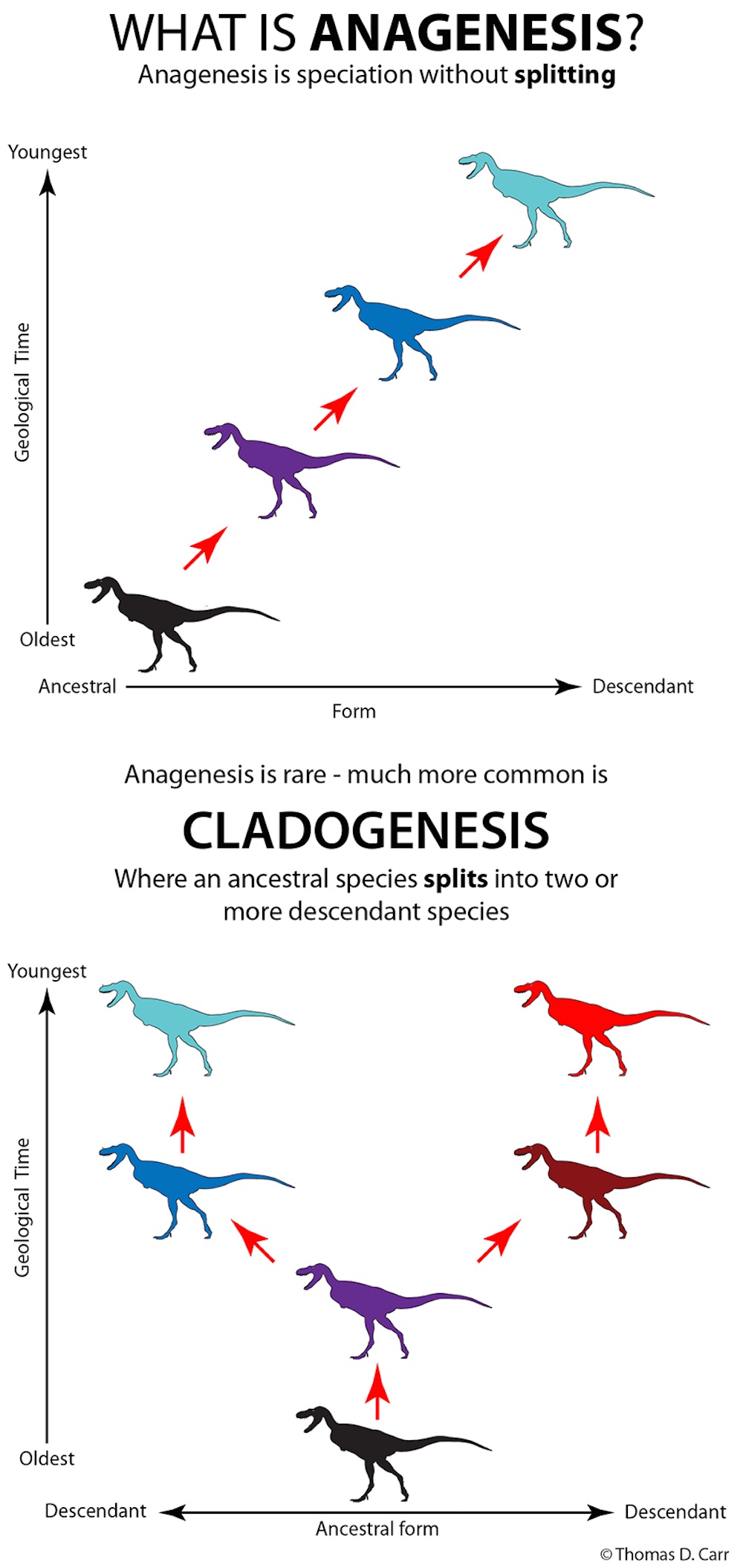
Evolution through anagenesis (above) is much rarer than cladogenesis (below).
Super skull
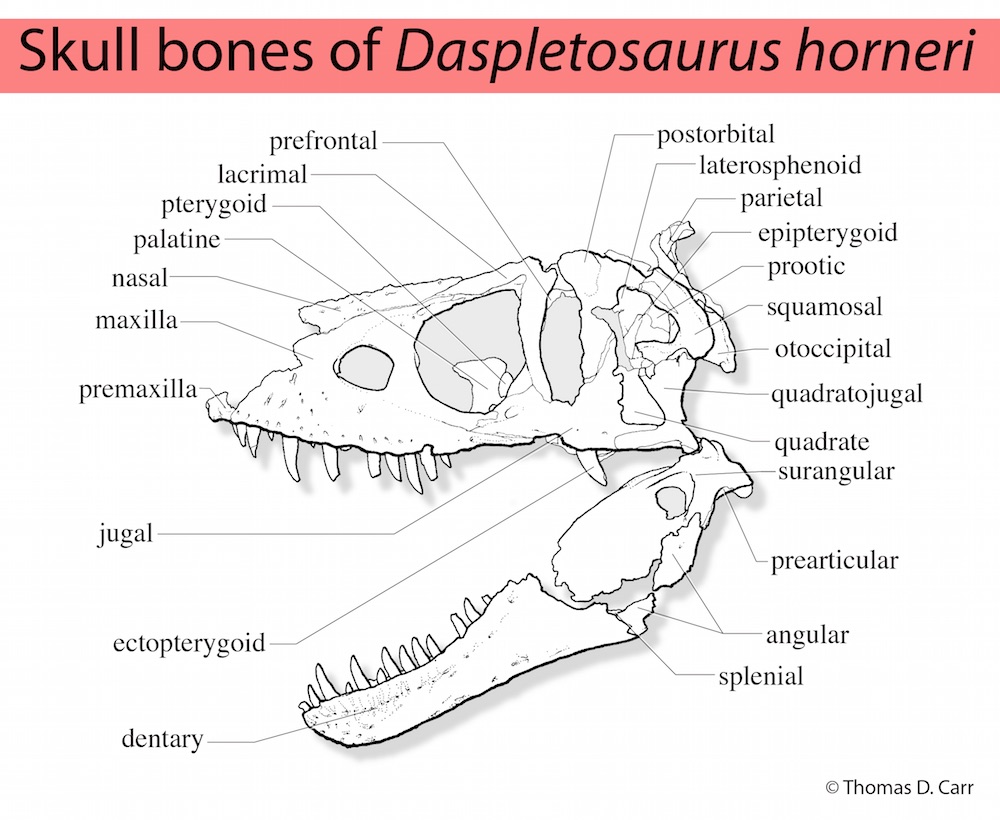
The anatomy of a D. horneri skull.
Direct descendant?
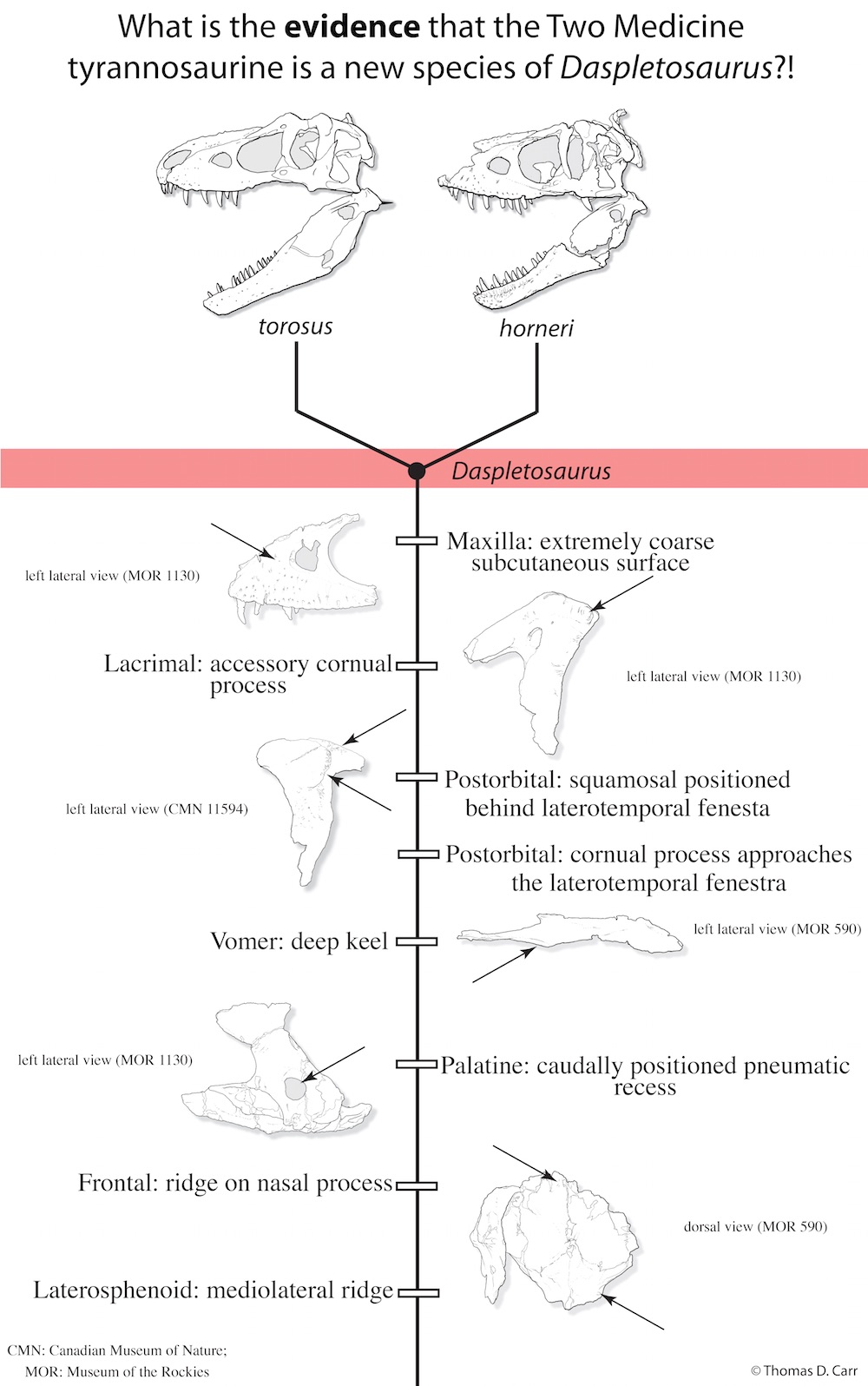
Different anatomical clues suggest that D. horneri is a direct descendant of another tyrannosaur called Daspletosaurus torosus. This likely happened through anagenesis, the researchers said.
Size matters
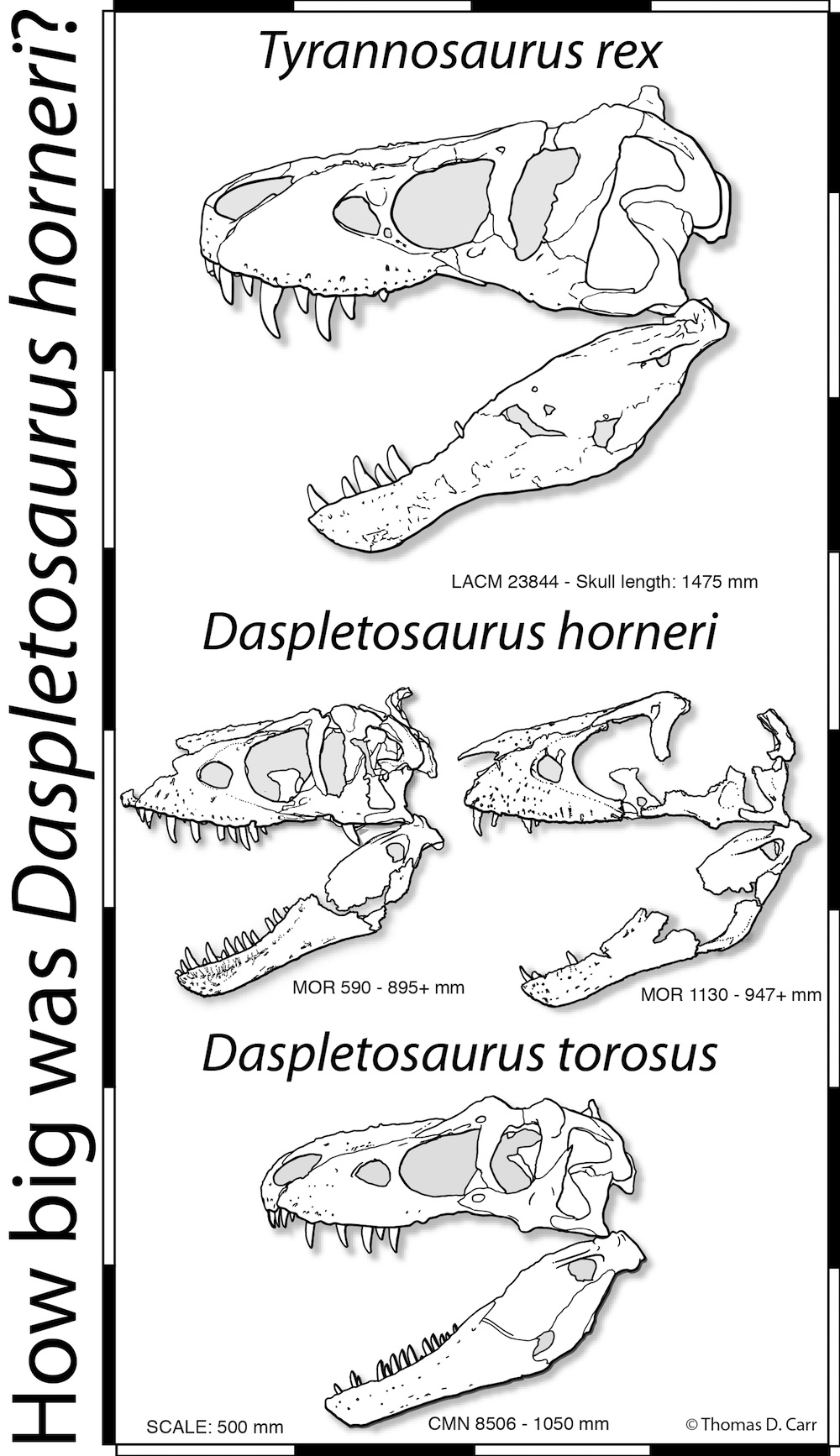
A comparison of D. horneri skulls, a T. rex skull and a D. torosus skull.
Sign up for the Live Science daily newsletter now
Get the world’s most fascinating discoveries delivered straight to your inbox.
Timeline
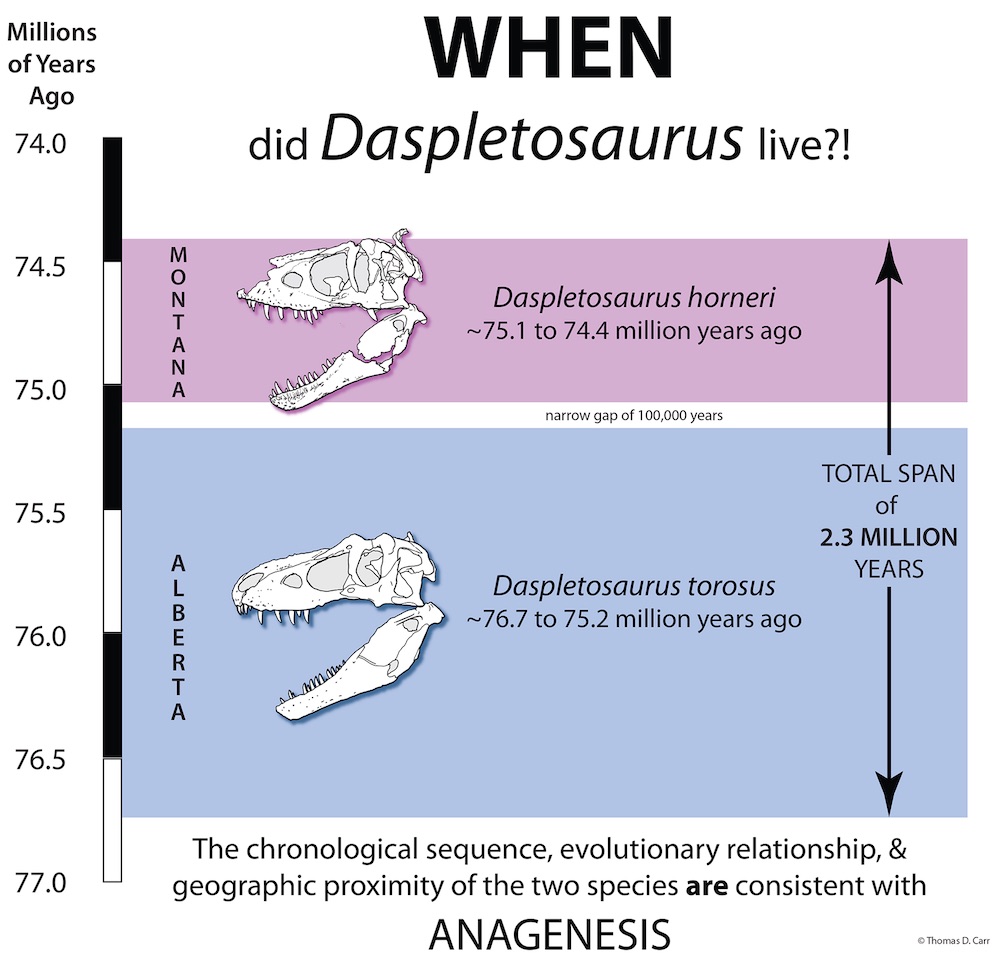
D. horneri lived from about 75.1 million to 74.4 million years ago, after D. torosus, which lived from about 76.7 million to 75.2 million years ago.
Dinosaur differences
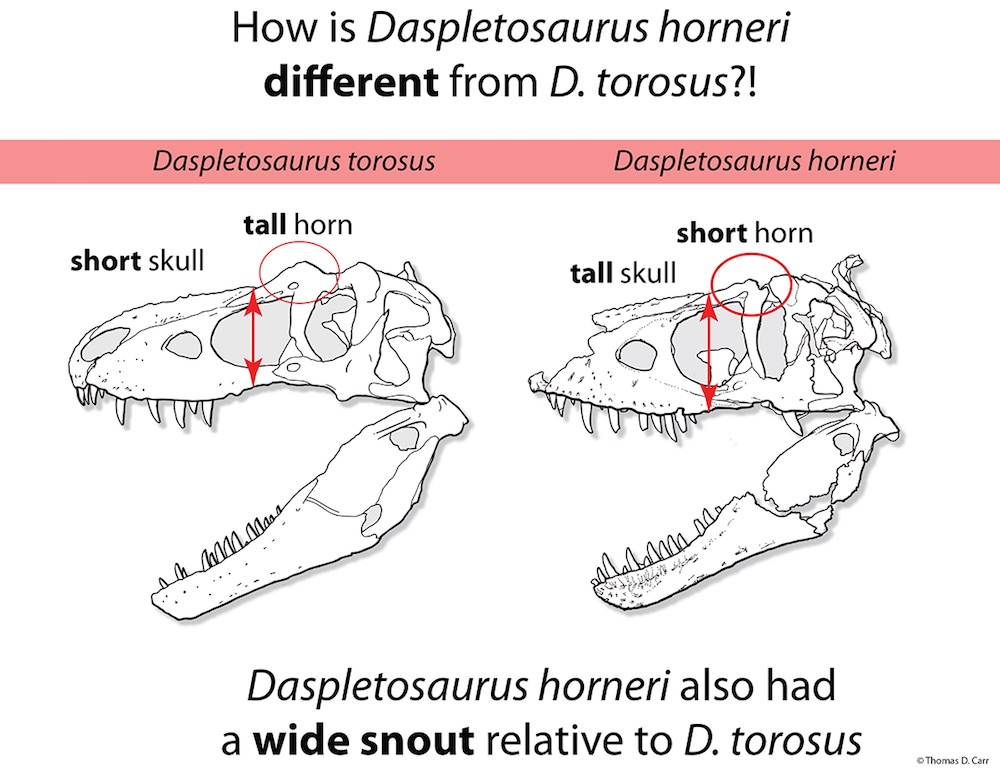
D. horneri and D. torosus have several differences.
Excavation

Researchers enlisted the help of mules to excavate the field jackets containing the bones of an adult D. horneri specimen in Montana in August 2001.
[ Read the Full Story on the New Tyrannosaur Finding ]

Laura is the archaeology and Life's Little Mysteries editor at Live Science. She also reports on general science, including paleontology. Her work has appeared in The New York Times, Scholastic, Popular Science and Spectrum, a site on autism research. She has won multiple awards from the Society of Professional Journalists and the Washington Newspaper Publishers Association for her reporting at a weekly newspaper near Seattle. Laura holds a bachelor's degree in English literature and psychology from Washington University in St. Louis and a master's degree in science writing from NYU.










